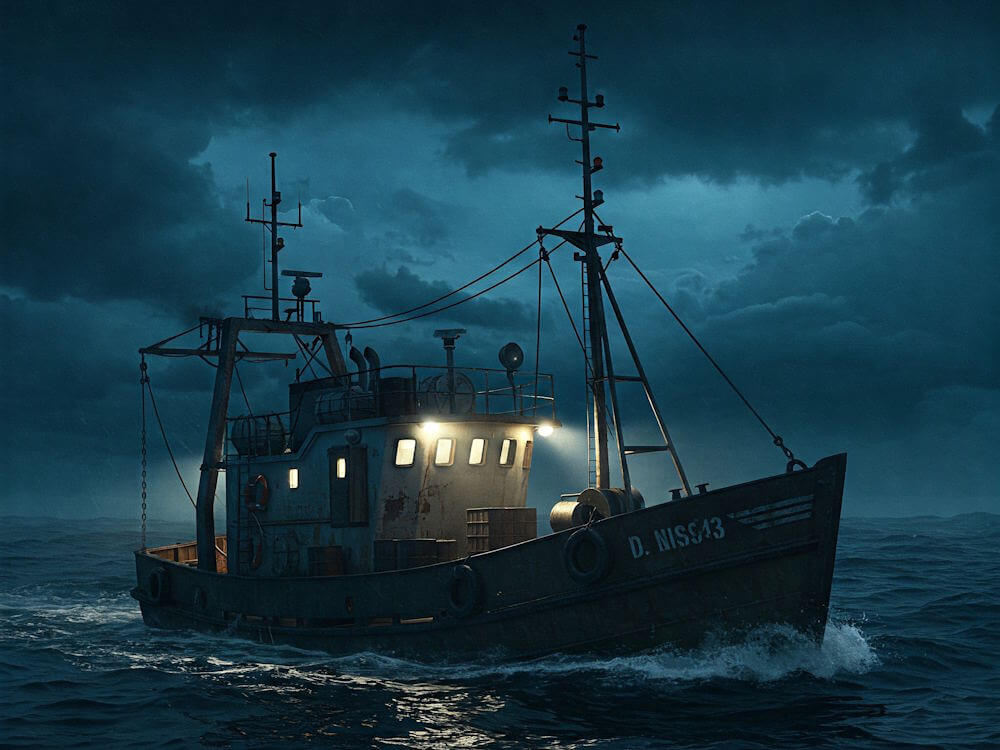The Amnesia franchise has long been a significant contributor to the horror gaming genre, captivating audiences with its immersive storytelling and spine-chilling atmosphere. Established with the release of “Amnesia: The Dark Descent” in 2010, the series has evolved through various iterations, each time enhancing its psychological horror elements while offering compelling gameplay mechanics. The latest installment, “Amnesia: The Bunker,” seeks to build upon this legacy by introducing new features while remaining true to the core principles that have defined the series.
Set against the backdrop of World War I, “Amnesia: The Bunker” transports players to a hauntingly atmospheric environment. Players find themselves inside a dimly lit and claustrophobic bunker, where the tension is palpable, and fear lurks around every corner. The game’s setting not only heightens the sense of dread but also serves as a character unto itself, influencing player decisions and uncovering the storyline through environmental storytelling. The immersive qualities of the setting are further enhanced by dynamic sound design, which evokes an eerie ambiance that significantly contributes to the horror experience.
In terms of gameplay, “Amnesia: The Bunker” introduces innovative mechanics that set it apart from its predecessors. The game incorporates elements of survival and resource management, encouraging players to think strategically to navigate the terror that awaits them. With the ability to utilize various tools and weapons, players must solve puzzles and fend off terrifying enemies, all while managing limited resources. This integration of survival elements adds layers of complexity to the gameplay, catering to both long-time fans of the franchise and newcomers seeking a thrilling horror experience. As players advance through the narrative, they will encounter a rich array of lore and character development that deepen the emotional stakes and amplify the horror.”
The Horrifying Setting of the Bunker
The atmosphere of Amnesia: The Bunker plays a critical role in shaping the players’ horror experience. The design of the bunker itself, a labyrinth of dark corridors and confined spaces, invokes an immediate sense of claustrophobia. As players navigate the dimly lit hallways, each creak of the floorboards and distant whispering echoes intensifies the looming dread, encapsulating them in a chilling world where every corner hides potential threats. This ominous design not only traps players physically but mentally, accentuating a pervasive sense of vulnerability that is central to the horror genre.
Key locations within the bunker, such as the armory and the control room, reinforce the feeling of isolation while serving as reminders of the past. In the armory, rusted weapons and scattered supplies create an atmosphere resembling a forgotten war zone, evoking the remnants of desperation and despair. The control room, filled with broken machinery and buzzing lights, fosters feelings of entrapment. The visual themes utilized, from the battered walls to the flickering illumination, work in tandem to create an environment rife with uncertainty and fear. Every room feels like a character in its own right, contributing to the overarching narrative of chaos and survival.
Sound design in Amnesia: The Bunker further amplifies the horror atmosphere. The combination of ambient noises, such as dripping water and echoing footsteps, creates an immersive experience where players feel as though they are not alone. Audio cues often serve as a warning of approaching threats, heightening tension and inducing panic. These soundscapes, coupled with the surroundings, define the experience of the bunker, immersing players in a nightmarish world. The interplay of visuals and sound ensures that the dread is palpable at every moment, transforming the bunker into a character steeped in horror.
Innovative Gameplay Features
Amnesia: The Bunker has introduced several innovative gameplay features that set it apart from its predecessors, primarily through the enhancement of puzzle mechanics and inventory management. One of the most notable aspects is the game’s emphasis on a more strategic approach to problem-solving. Players are encouraged to think critically about their surroundings and utilize environmental clues to progress. This allows for a deeper engagement with the game’s narrative and adds layers of complexity to the traditional puzzle-solving experience.
In addition to more intricate puzzles, Amnesia: The Bunker also offers a revamped inventory management system. Players are required to manage limited resources effectively, which adds an element of survival to the gameplay. This means that players must decide when to utilize items such as health kits or flares, weighing the risk of potentially encountering enemies against the need to preserve essential supplies. This strategic decision-making enhances the immersion and raises the stakes for players as they navigate the horrors within the bunker.
Furthermore, the introduction of multiplayer and co-op options presents an exciting twist to the franchise. While the single-player experience retains the franchise’s hallmark terror, the co-op mode enables players to strategize and solve puzzles together, fostering teamwork. This feature not only differentiates Amnesia: The Bunker from earlier titles but also encourages social interaction, allowing friends to share in the chilling atmosphere. The cooperative puzzles are designed to require collaboration, enhancing the overall sense of urgency and fear.
These innovative gameplay features fundamentally alter how players interact with the game, providing both fresh experiences for veterans and an appealing introduction for newcomers to the Amnesia series. By incorporating these mechanics, Amnesia: The Bunker demonstrates a commitment to evolution within the survival horror genre, captivating audiences with its unique approach.
The Psychological Horror Elements
Amnesia: The Bunker embraces the franchise’s established psychological horror elements, masterfully intertwining fear, tension, and dread to create an immersive experience. Drawing on past iterations, this installment plunges players into an atmosphere laden with suspense, where every creak of a floorboard and flicker of a light bulb heightens the sense of unease. The pervasive dread in Amnesia: The Bunker serves not merely as a backdrop but as a critical component that influences player behavior and decision-making.
The game’s narrative is expertly crafted, gradually revealing a chilling story that manipulates emotions and senses. Through its intricate storytelling, players experience moments of unsettling introspection as they navigate through the unsettling environments. The use of psychological horror ensures that players are not just passive observers but active participants in their own descent into madness, experiencing the protagonist’s struggles firsthand. This technique engages the player’s mind, crafting an experience that is as much about the psychological toll of survival as it is about evading physical threats.
Tension often escalates through cleverly designed mechanics that emphasize vulnerability. Limited resources amplify this sense of unease, pushing players to make harrowing choices that resonate long after they have made them. The unpredictable nature of the antagonists adds another layer of fear; their relentless pursuit forces players to confront not only their characters’ fears but their own. The unpredictable entities lurking around every corner reinforce an unnerving atmosphere, keeping players on edge.
Amnesia: The Bunker effectively employs these psychological horror elements to create an atmosphere that is both haunting and unforgettable, ensuring that the tension remains palpable throughout the experience. As players navigate through shadows and memories, they become entwined in a narrative that is as psychologically complex as it is terrifying, a hallmark of the esteemed franchise.
Meet the Terrifying Enemies
In “Amnesia: The Bunker,” players face an array of terrifying antagonists that heighten the game’s atmosphere of dread and suspense. Each enemy is meticulously designed to elicit fear and paranoia in players, contributing to a rich tapestry of horror that pervades the bunker. The grotesque aesthetics of these monsters are not only visually stimulating but also resonate deeply with the emotional themes of the game.
The primary adversaries encountered in the game include the formidable Mutants, once human but now grotesquely transformed by the darkness enveloping the bunker. Their unsettling appearance, marked by disfigured limbs and chilling facial features, serves as a constant reminder of their former humanity. This tragic quality makes them especially horrifying, as they embody the theme of loss and degradation. Their unpredictable behaviors add another layer of tension, as players must be vigilant and adaptive to survive these encounters.
Additionally, the eerie sounds that accompany the Mutants amplify their menacing presence. The guttural growls and anguished screams echo through the bunker, escalating the sense of urgency and fear. These auditory cues are instrumental in crafting suspense, often giving players little time to prepare for an oncoming attack. Engaging with these horrifying creatures requires strategic thinking, as players can either confront or evade them, each choice lending to a unique gameplay experience.
Another formidable enemy includes the Insidious Shadows, who embody the primal fear of the unknown. These entities manifest differently, with their presence often signaled by an unsettling darkness that spreads through the environment. Players must navigate the shadows with caution, as even a fleeting encounter can lead to dire consequences. Such encounters challenge players’ understanding of their surroundings, forcing them to confront both internal fears and the lurking threats that inhabit the bunker.
In summary, the enemies in “Amnesia: The Bunker” do more than merely impede progress; they are integral to the horror narrative, each presenting distinct challenges that enhance gameplay while exploring the depths of fear. Their designs and behaviors effectively deliver a relentless experience that lingers long after players have left the bunker.
Narrative and Storytelling Techniques
Amnesia: The Bunker employs a distinctive narrative structure that deepens the horror experience while enabling players to engage with the story in a more active manner. At its core, the plot revolves around the protagonist, who finds themselves trapped within a sinister bunker, struggling to navigate both the claustrophobic environment and the horrors that lurk within. As the backstory unfolds, players uncover fragments of the past, revealing the traumatic history associated with the bunker, enhancing the narrative’s depth.
Character development plays a crucial role in immersing players in the experience. The protagonist’s psychological state fluctuates as they confront their fears and the gruesome reality of their surroundings, fostering an emotional connection with the audience. Through well-crafted dialogue and narrative arcs, players gain insight into both the main character’s struggle and the malevolent entities that inhabit the bunker. This juxtaposition amplifies the tension, allowing players to empathize with the protagonist while withholding the resolution that comes from understanding the full scope of the threats faced.
Moreover, environmental storytelling significantly enriches the narrative. The design of the bunker itself serves as a character, filled with disturbing artifacts, eerie soundscapes, and chilling visuals that hint at the horrors experienced by previous inhabitants. Found items are strategically placed throughout the environment, each contributing to the lore of the bunker and prompting players to piece together the storyline. These elements not only provide context and clues, but they also serve to evoke a sense of dread and anticipation. By blending narrative intricacies with psychological horror, Amnesia: The Bunker creates an immersive storytelling experience that holds players captive as they delve deeper into its darkened labyrinth.
Combat and Survival Mechanics
In “Amnesia: The Bunker,” the integration of combat and survival mechanics plays a pivotal role in shaping the player’s experience. Players are thrust into a world where threats are ever-present, necessitating a balance between offensive tactics and avoidance strategies. The game encourages players to engage with their environment creatively, utilizing available resources for defense rather than relying solely on direct confrontation. This strategic approach heightens the tension as players must constantly evaluate their surroundings for potential hazards and tools.
The combat system introduces players to various weapons and defensive items, each requiring careful handling. From firearms to makeshift traps, every element comes with its unique advantages and limitations. However, ammunition is limited, compelling players to consider their shot placement and when to hold fire. The emphasis on resource management extends beyond weapons, as players must also navigate their inventory efficiently. The game’s inventory system allows for limited storage, prompting players to prioritize essential items like medical supplies, ammunition, and crafting materials. This limitation adds an additional layer of challenge, as players must make strategic choices about what to carry based on their immediate needs and long-term survival goals.
Moreover, avoiding threats is equally crucial to survival. Stealth mechanics allow players to navigate the environment silently, using shadows and sound to their advantage. The terror-inducing atmosphere encourages individuals to avoid direct engagements whenever possible, creating a palpable fear that enhances the overall experience. Understanding enemy behaviors is vital, as discerning when to hide or flee can mean the difference between life and death in the game’s suffocating confines. The interplay between combat and survival mechanics in “Amnesia: The Bunker” cultivates a tension-filled experience, making each encounter a test of wit and resourcefulness.
Comparisons to Previous Installments
The Amnesia franchise has garnered a dedicated following since the release of its first installment, “Amnesia: The Dark Descent,” in 2010. Each subsequent game in the series has introduced its own unique elements while retaining core themes of psychological horror, survival, and the struggle against haunting memory lapses. “Amnesia: The Bunker” continues this tradition but with several notable enhancements that reflect the growth of the franchise.
Unlike its predecessors, “The Bunker” immerses players in a more open-world environment, a significant departure from the more linear settings of earlier games. This game allows for a sense of exploration and agency, providing players with various pathways and strategies to overcome challenges. This shift contributes to heightened tension and unpredictability, as players can choose how to approach obstacles, much unlike “Amnesia: A Machine for Pigs,” which was criticized for its lack of player agency.
Furthermore, “Amnesia: The Bunker” incorporates new gameplay mechanics, such as resource management and crafting, which were not prominent in previous titles. This addition encourages players to think creatively and strategically, enhancing the survival horror experience. The implementation of a more robust AI for the game’s antagonists also raises the stakes, creating a more thrilling atmosphere as players navigate through claustrophobic corridors, which resonates with the feelings of hopelessness and dread characteristic of the franchise.
However, despite these innovations, thematic elements remain consistent. The exploration of memory, fear, and the consequences of past actions continues to serve as a backbone for “The Bunker,” echoing the psychological depth found in previous games. This careful blend of tradition and innovation exemplifies the franchise’s evolution while catering to the expectations of its loyal fan base.
Community Reactions and Reviews
The release of “Amnesia: The Bunker” has sparked considerable discussion within the gaming community, with players sharing diverse opinions concerning its innovative mechanics and immersive narrative. Many gamers have lauded the introduction of new gameplay elements that deviate from the established formula of previous installments. These mechanics are designed to enhance the interactive experience and promote deeper engagement with the haunting atmosphere the franchise is known for.
Critics and players alike have noted that the game significantly expands its narrative depth, providing lush storytelling that integrates seamlessly with gameplay. Some reviewers have emphasized how the enriched plot contributes to a heightened sense of anxiety and dread, drawing players further into the harrowing intricacies of the game world. The amalgamation of suspense-driven storytelling with strategic gameplay resolves many concerns regarding repetitiveness, often associated with horror games. However, there are dissenting voices within the community. Some players have expressed that while the new mechanics add complexity, they may also detract from immediate horror immersion, arguing that the need for strategic planning can reduce the immediate fear factor associated with traditional horror games.
In terms of overall effectiveness in delivering a horror experience, “Amnesia: The Bunker” receives mixed reactions. Many players applaud its atmospheric tension, citing heart-pounding moments and effective scares that remain true to the series’ roots. Yet, some critics point to inconsistent pacing, suggesting that certain segments could benefit from tighter execution to maintain suspense throughout the gameplay. Despite these varied perspectives, the feedback reflects an engaged discourse, with fans eager to explore the evolution of horror in video games. As the community continues to dissect the game’s features and implications, it remains evident that “Amnesia: The Bunker” has positioned itself as a significant entry in the genre, prompting both praise and critique from diverse gaming voices.
Conclusion: The Future of Amnesia
Amnesia: The Bunker has undoubtedly made a significant impact on the horror gaming genre. By merging traditional horror elements with innovative mechanics, it has invigorated the franchise while capturing the attention of both old fans and newcomers alike. The game’s emphasis on player agency, survival mechanics, and atmospheric storytelling has redefined aspects of survival horror, inviting players to engage with its haunting environments and thoughtful narratives. As players navigate through the psychological terrors presented in the game, they find themselves not merely passive observers but active participants in the unfolding horror. This shift not only enhances immersion but also raises the stakes, making every decision crucial.
Looking ahead, the future of the Amnesia franchise appears promising. The developers have set a high bar with Amnesia: The Bunker, and players are eager for further innovations. Future installments may explore new settings and characters, delving deeper into the psychological realms that have become a trademark of the series. Moreover, advancements in technology could pave the way for even more immersive experiences, potentially incorporating virtual reality elements or enhanced graphics. The blend of storytelling with cutting-edge gameplay mechanics will likely continue to be a focal point as the franchise evolves.
As player expectations grow, so too does the potential for innovations within the gameplay and narrative structures of the Amnesia series. The incorporation of community feedback could also play a vital role in shaping what comes next. Horror fans look forward to how the franchise will continue to engage with its core themes while addressing new trends in the gaming landscape. Overall, the future of the Amnesia franchise is ripe with opportunities, making it an exciting time for both developers and players alike.




